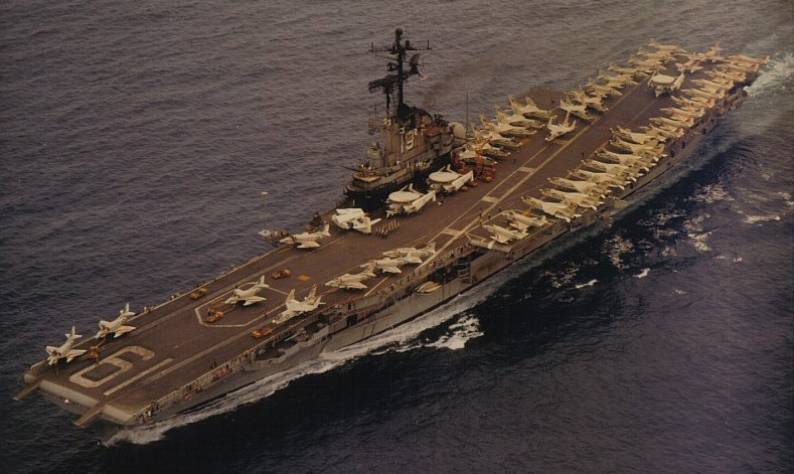This idea has been playing around my head for the last couple of days - apologies its a bit of a mind dump
A recent thread on this here forum focused on the UKs 1966 Defence White paper that saw the scrapping of both the Type 82 Destroyer project and the 55,000 Ton CVA-01 design of Carrier in favour of an RAF centred defence policy that ultimately never materialised.
Now all things being equal prior to this Britain would probably have built 4 of the Missile Cruisers/Heavy Destroyers and 2 of the Carriers (replacing the then existing carriers in service by 1970-75.
However as we know the RAF told porky pies about their capability including apparently moving Australia closer to Singapore and the Labour government insisted that the US was going to buy British ships and goods (which they didn't).
Also that land based TSR2 could perform the role of carrier based air groups was the other lie and despite it being challenged by both the Labours own minister of Defence and the then Conservative shadow Minster of Defence the government went ahead and cancelled the design.
All things considered CVA-01 wasn't a very good design of carrier - its chief designer Louis Rydill said the following:-
I interviewed the last chief designer of CVA-01, Louis Rydill, just before he died, and he confirmed that he had said that the day the project was cancelled was the happiest of his life. However, that was not because he did not believe in the carrier case. It was because he felt that he had been forced to make so many compromises, and introduce so many risky design elements, because of size and budget restrictions, that the whole project had become a nightmare.
http://www.bbc.co.uk/news/magazine-28128026
I find myself in agreement with him
At 55 thousand tons the CVA-01 seems far less capable than the marginally heavier US Kitty Hawk class (60,000+ tons) ie Kitty Hawk design could carry 90 odd Aircraft and CVA-01 could carry 50 - and it seems madness to me here and now that such a compromised committee design was going to get the go ahead.
So what are the challenges and POD's that would have enabled Britain to firstly built 2 or possibly 3 UK 'Kitty Hawks'?
What changes would this have created to subsequent events?
What changes would this have made to subsequent British aircraft design collaborations - ie Improved Phantom Designs, A British multi-role version of the F14 Tomcat (in both Navy and RAF Service) in the 80s instead of the 2 Tornado designs.
Perhaps an extended development cycle of the Buccaneer? Perhaps an S3 variant and beyond?
A recent thread on this here forum focused on the UKs 1966 Defence White paper that saw the scrapping of both the Type 82 Destroyer project and the 55,000 Ton CVA-01 design of Carrier in favour of an RAF centred defence policy that ultimately never materialised.
Now all things being equal prior to this Britain would probably have built 4 of the Missile Cruisers/Heavy Destroyers and 2 of the Carriers (replacing the then existing carriers in service by 1970-75.
However as we know the RAF told porky pies about their capability including apparently moving Australia closer to Singapore and the Labour government insisted that the US was going to buy British ships and goods (which they didn't).
Also that land based TSR2 could perform the role of carrier based air groups was the other lie and despite it being challenged by both the Labours own minister of Defence and the then Conservative shadow Minster of Defence the government went ahead and cancelled the design.
All things considered CVA-01 wasn't a very good design of carrier - its chief designer Louis Rydill said the following:-
I interviewed the last chief designer of CVA-01, Louis Rydill, just before he died, and he confirmed that he had said that the day the project was cancelled was the happiest of his life. However, that was not because he did not believe in the carrier case. It was because he felt that he had been forced to make so many compromises, and introduce so many risky design elements, because of size and budget restrictions, that the whole project had become a nightmare.
http://www.bbc.co.uk/news/magazine-28128026
I find myself in agreement with him
At 55 thousand tons the CVA-01 seems far less capable than the marginally heavier US Kitty Hawk class (60,000+ tons) ie Kitty Hawk design could carry 90 odd Aircraft and CVA-01 could carry 50 - and it seems madness to me here and now that such a compromised committee design was going to get the go ahead.
So what are the challenges and POD's that would have enabled Britain to firstly built 2 or possibly 3 UK 'Kitty Hawks'?
What changes would this have created to subsequent events?
What changes would this have made to subsequent British aircraft design collaborations - ie Improved Phantom Designs, A British multi-role version of the F14 Tomcat (in both Navy and RAF Service) in the 80s instead of the 2 Tornado designs.
Perhaps an extended development cycle of the Buccaneer? Perhaps an S3 variant and beyond?
